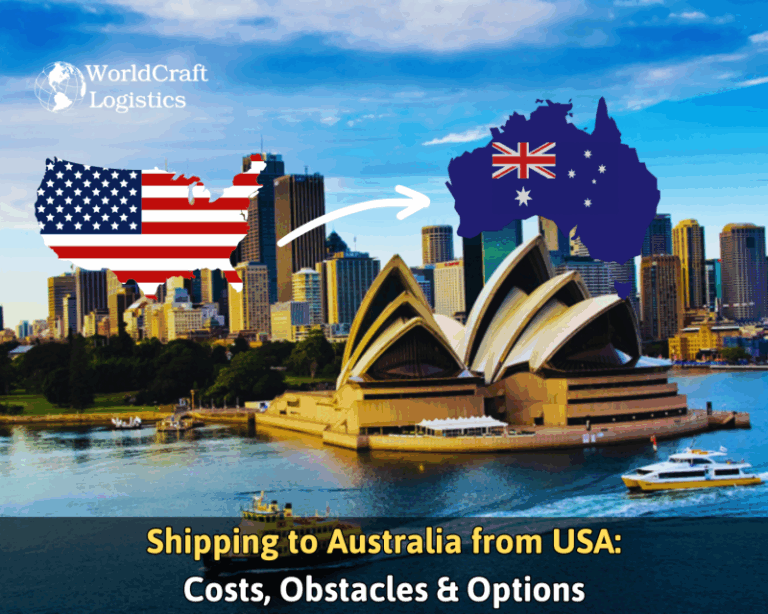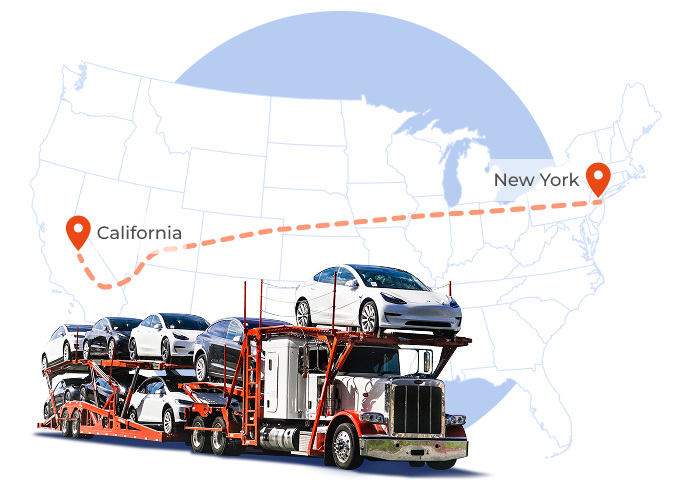Shipping to Mexico: Costs, Services, and Key Considerations
Mexico, a major trade hub with a $1.3 trillion economy, is a top destination for global exports, receiving goods like electronics, vehicles, and consumer products. In 2021, U.S. exports alone reached $276.46 billion under the US-Mexico-Canada Agreement (USMCA). Users searching for “shipping to Mexico” likely seek information on costs, reliable service providers, and logistics challenges like customs regulations. This comprehensive guide explores sea, air, and land freight options from key origins (US, China, Europe), includes a detailed comparison table, and offers practical tips to ensure efficient, cost-effective shipping.
Shipping Options to Mexico
Shipping to Mexico involves three main modes: sea freight, air freight, and land freight (primarily from the US). Sea freight includes Full Container Load (FCL), Less than Container Load (LCL), and Roll-On/Roll-Off (RoRo). Air freight covers bulk air cargo and small parcel express services. Land freight leverages the US-Mexico border for truck and rail transport.
Sea Freight: Cost-Effective for Large Shipments
Sea freight is ideal for bulk or heavy cargo, with major ports like Veracruz, Manzanillo, and Altamira handling significant traffic.
Full Container Load (FCL)
FCL offers exclusive use of a 20-foot (33.2 cubic meters) or 40-foot (67.7 cubic meters) container, suitable for shipments filling at least 50–60% of a container. From the US (Miami), a 40-foot FCL to Veracruz costs $1,500–$2,500, with 5–10 day transit. From China (Shanghai), costs range from $2,000–$3,500, with 15–30 days. European ports like Rotterdam charge $3,500–$5,500, with 18–35 days.
Less than Container Load (LCL)
LCL consolidates smaller shipments, with costs based on volume or weight. It’s ideal for shipments under 15 cubic meters. From the US, a standard pallet (48″ x 40″ x 48″) to Manzanillo costs $80–$120, with 7–14 days. From China, LCL costs $70–$130 per cubic meter, with 20–40 days. From Europe, expect $100–$180 per cubic meter.
Roll-On/Roll-Off (RoRo)
RoRo is used for vehicles or heavy equipment, driven onto the vessel. Costs vary by size and weight, typically $1,000–$2,500 from the US for a standard vehicle, with 5–10 days. Contact providers for precise quotes.
Air Freight: Speed for Urgent Shipments
Air freight is faster but more expensive, ideal for high-value or time-sensitive goods. Key airports include Mexico City, Monterrey, and Guadalajara.
Bulk Air Cargo
Bulk air cargo suits larger shipments needing speed, with transit times of 2–5 days from the US, 5–10 days from China, and 7–12 days from Europe. Costs are based on actual or volumetric weight (length x width x height in cm ÷ 6000), averaging $2.50–$4.00/kg from the US, $3.50–$5.00/kg from China, and $3.00–$4.50/kg from Europe.
Small Parcel Express Services
Express couriers like USPS, FedEx, UPS, DHL, and Cainiao Express are ideal for small parcels or documents. From the US, USPS First Class International delivers 1 kg packages for $17.85–$25, with 6–10 days. FedEx/UPS International Priority delivers in 1–3 days for $30–$50 (5 lbs). From China, Cainiao Express offers 1 kg parcels at 83 RMB ($11.53 USD) for 10–17 days, a budget-friendly option. From Europe, DHL Express costs $50–$100 for 1–5 kg, with 3–7 days.
Land Freight: Efficient for US-to-Mexico Shipping
Land freight via truck or rail is unique to US-to-Mexico routes, using border crossings like Laredo, TX (Nuevo Laredo) and El Paso, TX (Juarez). Full Truckload (FTL) costs $1,000–$2,000 for routes like Laredo to Monterrey, with 1–5 days. Less-than-Truckload (LTL) costs $50–$150 per pallet, ideal for smaller shipments.
Comparison of Shipping Options
Below is a comparison table of shipping options to Mexico from the US, China, and Europe, designed for clarity and visual appeal.
| Mode | Origin | Cost (Example) | Transit Time | Suitability |
|---|---|---|---|---|
| FCL (40-foot) | US | $1,500–$2,500 (Miami–Veracruz) | 5–10 days | Large, heavy shipments (e.g., machinery) |
| China | $2,000–$3,500 (Shanghai–Manzanillo) | 15–30 days | Bulk goods, cost-effective | |
| Europe | $3,500–$5,500 (Rotterdam–Veracruz) | 18–35 days | Industrial equipment, pharmaceuticals | |
| LCL | US | $80–$120 per cbm | 7–14 days | Smaller shipments under 15 cbm |
| China | $70–$130 per cbm | 20–40 days | E-commerce, partial loads | |
| Europe | $100–$180 per cbm | 18–35 days | Mixed cargo, smaller volumes | |
| RoRo | US | $1,000–$2,500 (vehicle) | 5–10 days | Vehicles, heavy equipment |
| China | $1,500–$3,000 (vehicle) | 15–30 days | Oversized machinery | |
| Europe | $2,000–$4,000 (vehicle) | 18–35 days | Specialty vehicles | |
| Bulk Air Cargo | US | $2.50–$4.00/kg (150 lbs: $150–$400) | 2–5 days | High-value, time-sensitive goods |
| China | $3.50–$5.00/kg | 5–10 days | Electronics, perishables | |
| Europe | $3.00–$4.50/kg | 7–12 days | Pharmaceuticals, urgent cargo | |
| Express (USPS) | US | $17.85–$25 (1 kg) | 6–10 days | Small parcels, budget-friendly |
| Express (FedEx/UPS) | US | $30–$50 (5 lbs) | 1–3 days | Urgent parcels, documents |
| Express (Cainiao) | China | $11.53 USD (83 RMB, 1 kg) | 10–17 days | E-commerce, cost-effective |
| Express (DHL) | Europe | $50–$100 (1–5 kg) | 3–7 days | High-priority small shipments |
| Truck (FTL) | US | $1,000–$2,000 (Laredo–Monterrey) | 1–5 days | Large cross-border shipments |
| Truck (LTL) | US | $50–$150 per pallet | 1–5 days | Smaller cross-border shipments |
Notes: Costs are estimates based on web data and may vary by carrier, season, and route. “cbm” = cubic meter. Cainiao Express data from China is included for comparison, showing cost advantages over US/Europe express options but slower transit times.
Selecting a Service Provider
Choosing a reliable provider is critical for seamless shipping. Below are key players and their offerings:
- America Ship: Offers ocean freight ($6/kg, 35 days) and air freight, with border warehousing for e-commerce.
- MyUS: Provides package consolidation, saving up to 80% on costs, with no US sales tax.
- Parcel Monkey: Compares courier rates, with USPS at $22.62 for small parcels and FedEx at $23 (2–5 days).
- Easyship: Features a rate calculator, with competitive rates for USPS, UPS, and DHL.
- ShipBob: Specializes in e-commerce fulfillment, offering USPS, FedEx, and DHL options.
- SFL Worldwide: Provides discounted rates via FedEx, UPS, and DHL, with customs support.
- Zion Shipping: Offers tailored solutions and a rate calculator for cross-border shipping.
- Latin American Cargo (LAC): Specializes in FCL, LCL, and air freight from the US and China, with customs expertise.
Compare quotes and prioritize providers with experience in Mexico’s logistics and customs processes.
Key Considerations and Challenges
Shipping to Mexico involves unique factors due to its trade agreements and border proximity. Below are critical considerations:
Customs and Regulations
- Documentation: Requires a Commercial Invoice, Packing List, USMCA Certificate of Origin (for US shipments), and Customs Declaration. Accurate descriptions avoid delays.
- Taxes and Duties: A 16% Value Added Tax (IVA) applies, with additional IEPS taxes for specialty items (e.g., tobacco). Duties are waived for USMCA-compliant goods.
- Restricted Items: Includes narcotics, used hardware, and certain agricultural products. Check the Mexican Customs website for updates.
- Clearance Time: Typically 1–7 days, with FedEx/UPS faster than USPS due to direct handling.
Seasonal and Economic Factors
- Peak Seasons: US/Mexican holidays (e.g., Christmas, Cinco de Mayo) increase rates and delays. Book early to avoid surcharges.
- USMCA Benefits: Eliminates tariffs for most US goods, reducing costs compared to China (25% tariffs).
- Border Congestion: Laredo and El Paso crossings may face delays during peak times.
Logistics Challenges
- Transit Times: Land freight (1–5 days) is fastest from the US, followed by air (1–12 days) and sea (5–35 days). Cainiao Express from China (10–17 days) is slower but cost-effective.
- Cargo Security: LCL shipments risk damage in shared containers. Use robust packaging or FCL for sensitive goods.
- Tracking: Providers like Easyship and Zion Shipping offer real-time tracking for transparency.
Cost-Saving Tips
- Consolidation: Use MyUS or ShipBob to combine packages, reducing costs.
- Compare Rates: Platforms like Parcel Monkey and Easyship provide real-time quotes.
- USMCA Compliance: Ensure proper documentation to avoid tariffs from the US.
- Off-Peak Shipping: Avoid holiday seasons for lower rates.
Conclusion
Shipping to Mexico offers diverse options tailored to cargo needs. Sea freight (FCL: $1,500–$5,500, LCL: $70–$180/cbm) suits bulk shipments, air freight (express: $11.53–$100, bulk: $2.50–$5.00/kg) is ideal for urgent goods, and land freight (FTL: $1,000–$2,000, LTL: $50–$150) excels for US-to-Mexico routes. Providers like America Ship, Easyship, and LAC offer reliable solutions, while customs compliance and seasonal planning are key. Use rate calculators and experienced providers to ensure cost-effective, efficient shipping to Mexico.
For quotes, contact America Ship (america-ship.com), Easyship (easyship.com), or Latin American Cargo (latinamericancargo.com). Plan today for a seamless shipping experience.


